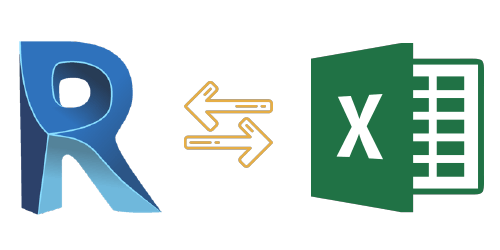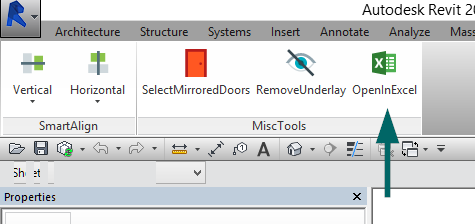Import Excel into Revit: Streamlining Your Process
Wiki Article
Revit Accelerator: Excel Combination Strategies for Improving Efficiency and Cooperation
Are you wanting to enhance your performance and cooperation while making use of Revit? Look no more! In this article, we will explore the benefits of integrating Excel into your Revit process. Discover just how you can simplify your procedures, optimize collaboration, and even find out sophisticated methods for raising productivity. And also, we will share finest practices for flawlessly integrating Excel right into your Revit jobs. Prepare to supercharge your Revit experience with our Revit Accelerator: Excel Combination Techniques!Advantages of Excel Integration in Revit
The advantages of Excel combination in Revit are numerous and can considerably boost efficiency and partnership. By effortlessly attaching these 2 effective tools, you can enhance your process and conserve beneficial time. With Excel assimilation, you can easily import and export information between Revit and Excel, allowing you to leverage the toughness of both programs.
Another advantage of Excel assimilation is the capability to create vibrant routines and reports. By connecting your Revit design to an Excel spread sheet, any type of changes made in Revit will instantly update in the matching Excel documents. This makes it very easy to produce up-to-date routines, amount launches, and other job documentation.
Excel integration in Revit additionally enables far better partnership among team members. With the capacity to import and export information, you can quickly share details with associates that may not have access to Revit. This advertises efficient interaction and enables better coordination and decision-making.
Enhancing Process With Revit and Excel
Simplifying workflows with Revit and Excel can greatly improve effectiveness and partnership. By combining the capacities of Revit and Excel, you can effortlessly move information in between the 2 applications, removing the need for hand-operated data entrance and lowering the threat of mistakes.
Making Use Of Revit and Excel together enables you to utilize the toughness of each program - revit tool. You can export information from Revit into Excel, where you can carry out intricate computations, produce charts and graphes, and evaluate the info in an extra reliable and orderly way. On the various other hand, you can import information from Excel into Revit, allowing you to rapidly upgrade your versions and paperwork based upon modifications made in Excel
The integration of Revit and Excel likewise promotes collaboration amongst employee. By sharing Excel files, you can quickly work together and interact on style and construction-related information. This boosts coordination and guarantees that everyone is collaborating with the most current details.
Taking Full Advantage Of Cooperation With Excel and Revit
To optimize cooperation with Excel and Revit, you can flawlessly upgrade and share style and construction-related information with your group. With just a couple of clicks, you can import Excel spreadsheets right into your Revit design, allowing you to quickly gain access to and manipulate the information.Among the vital advantages of using Master conjunction with Revit is the capacity to update information in both programs concurrently. Any kind of modifications made in Excel will immediately be mirrored in Revit, and vice versa. This guarantees that everyone is working with the most current information, staying clear of confusion and conserving valuable time.
Furthermore, Excel supplies effective tools for evaluating and organizing data, which can greatly boost your partnership efforts. You can produce personalized records and charts in Excel, helping you to envision and communicate crucial project information successfully. This can be specifically useful when offering data to stakeholders or making informed decisions based upon job metrics.
Advanced Techniques for Enhancing Productivity in Revit Utilizing Excel
By utilizing advanced techniques in Revit, you can substantially boost your productivity by leveraging the power of Excel. Among the vital approaches for improving efficiency is by utilizing Excel as an information management device. With Revit's Excel integration function, you read the article can connect Excel spreadsheets straight to your Revit model, enabling you to conveniently handle and upgrade data. This integration allows you to create timetables, calculate quantities, and carry out information analysis successfully.
Additionally, you can make use of Excel macros to automate repetitive jobs in Revit (import excel into revit). Macros allow you to tape a series of activities and play them back with a solitary click, conserving you time and effort. You can develop a macro to instantly create space schedules or update criterion values in bulk.
Finest Practices for Excel Combination in Revit
Making Use Of Excel as a data monitoring device in Revit allows for effective monitoring and upgrading of data. One of the finest methods for Excel integration in Revit is to produce a clear and arranged data structure. By complying with these finest techniques, you can properly utilize Excel as a data monitoring device in Revit and increase your efficiency and cooperation.Conclusion
In final thought, incorporating Excel with Revit can greatly improve productivity and partnership in the design procedure. By leveraging the power of Excel, Revit individuals can attain greater degrees of productivity and partnership in their tasks.With Excel combination, you can easily import and export information between Revit and Excel, permitting you to utilize the toughness of both programs.
One of the vital benefits of Excel integration is the ability to make use of Excel solutions and functions within Revit. By linking look here your Revit design to an Excel spreadsheet, any kind of changes made in Revit will automatically update in the corresponding Excel documents. On the other hand, you can import information from Excel right into Revit, allowing you to promptly update your versions and documentation based on adjustments made in Excel.
With Revit's Check Out Your URL Excel combination feature, you can link Excel spreadsheets straight to your Revit design, permitting you to conveniently handle and update information.
Report this wiki page